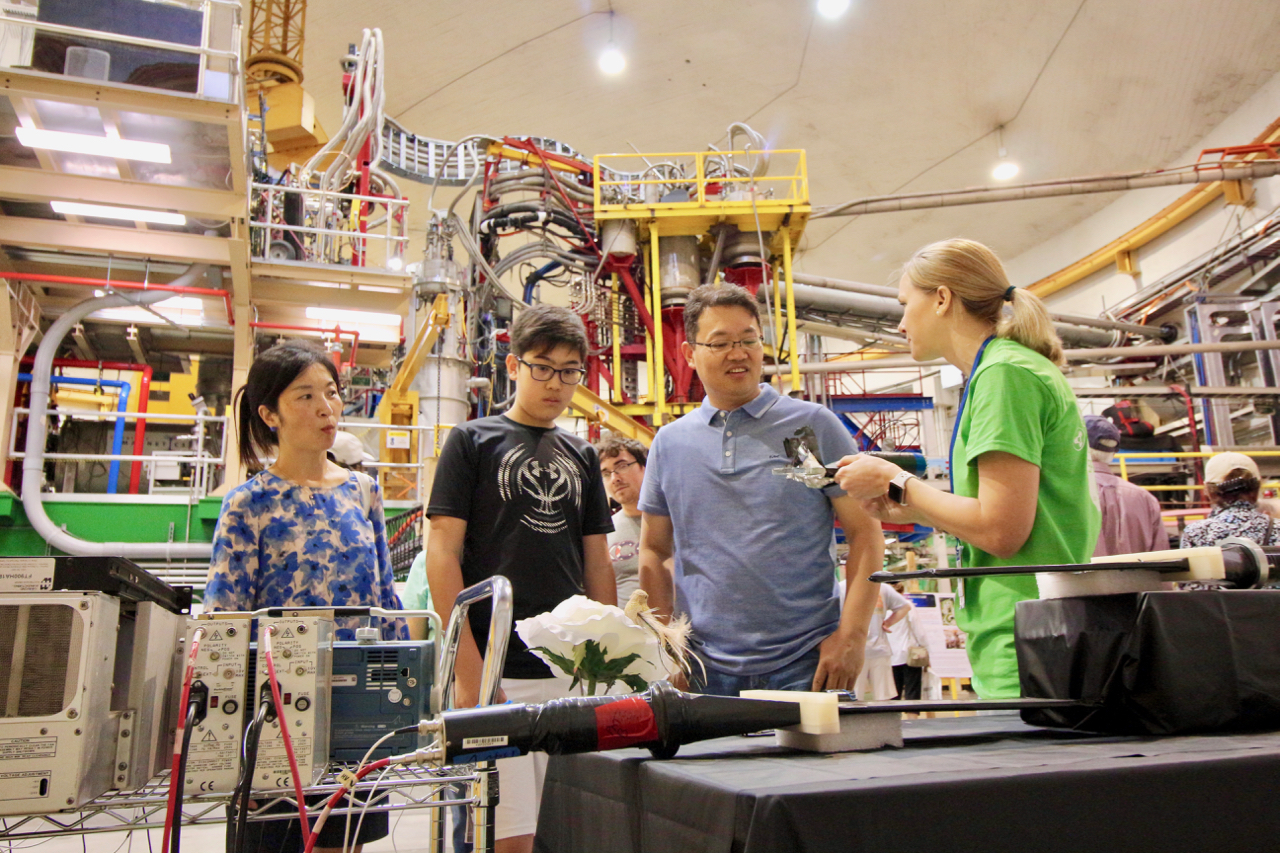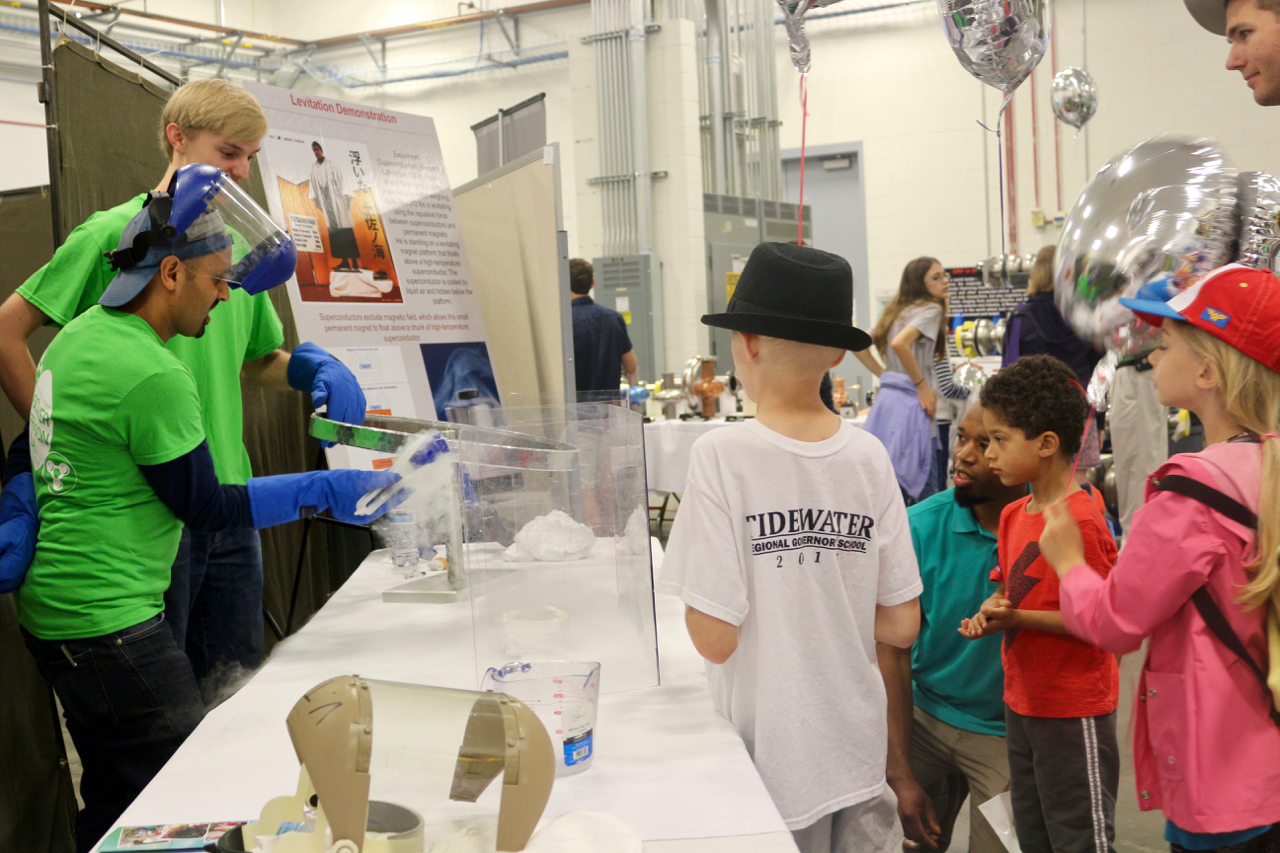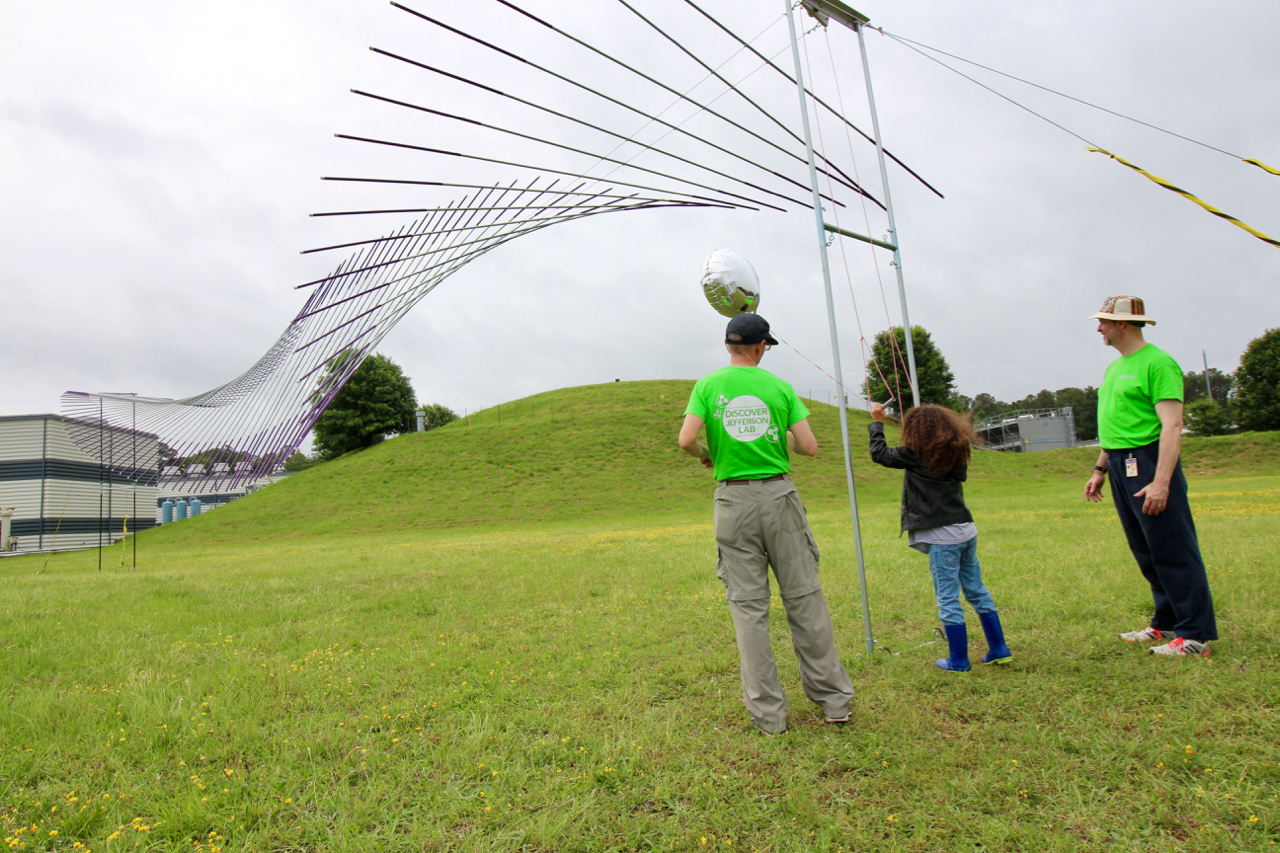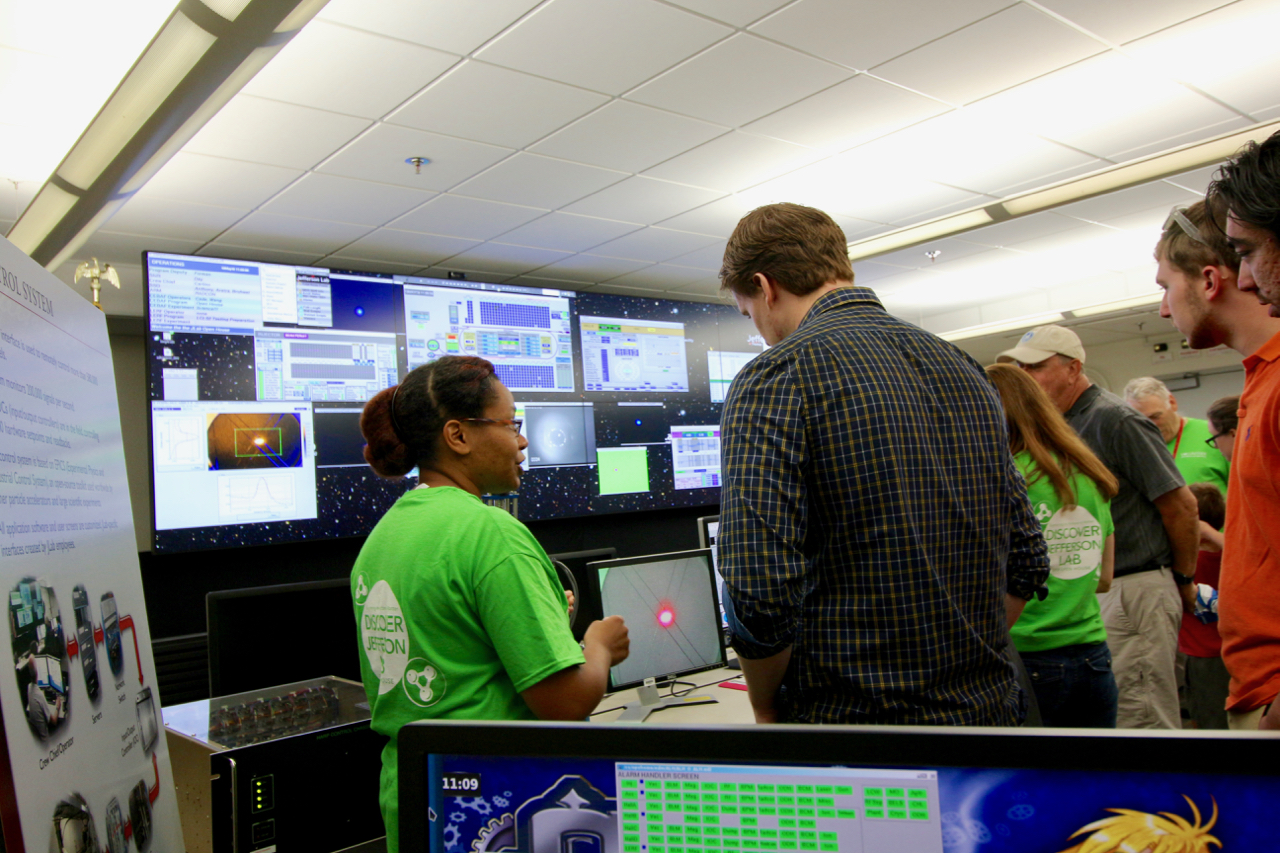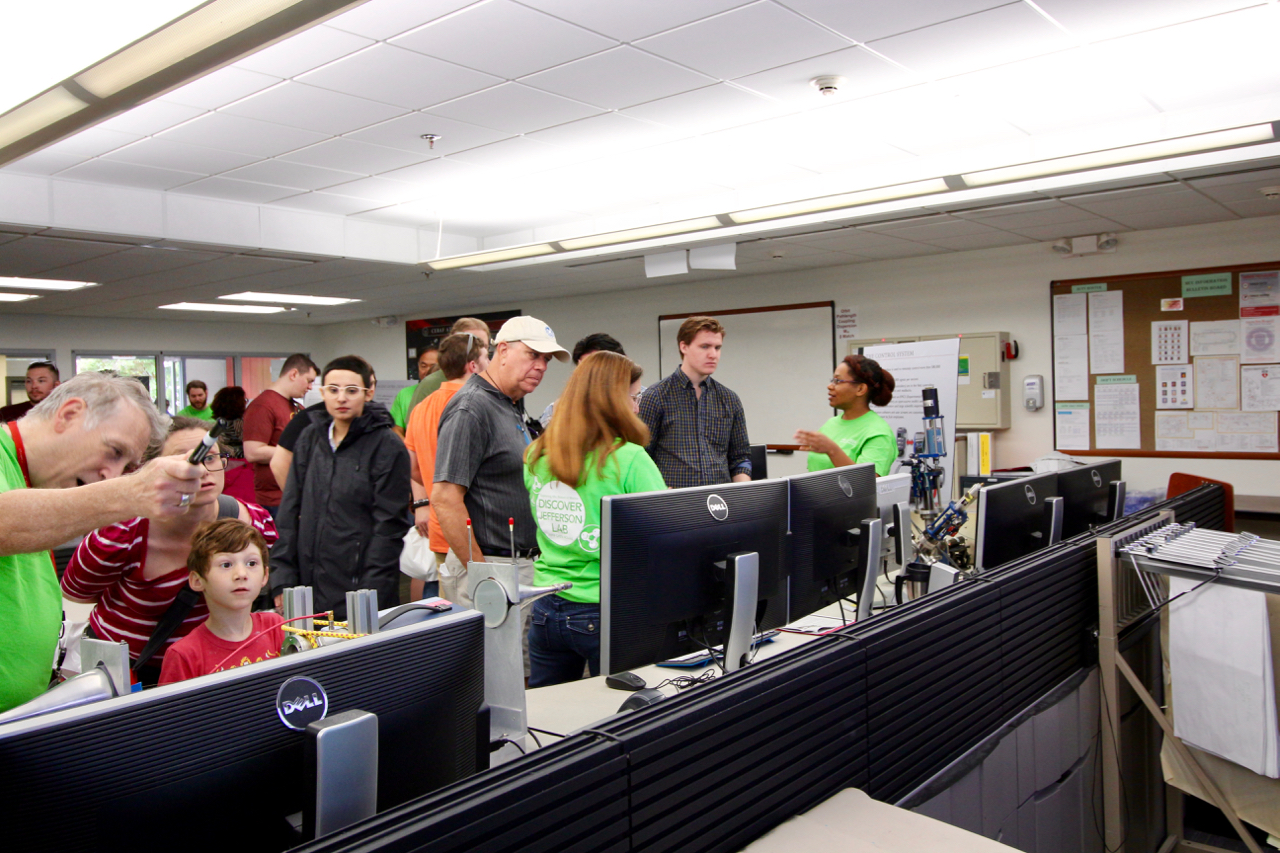Scientists, engineers, technical staff and other volunteers were on hand at each exhibit to describe how the highly specialized equipment runs and how it is used to help researchers conduct experiments.
Visitors flock to a unique experience providing an inside look at Virginia’s only Department of Energy funded laboratory.
Even the threat of severe weather couldn’t keep away the almost 6,000 community members who attended Jefferson Lab’s biennial open house event on Saturday, May 19, 2018. Assisted by more than 350 volunteers, visitors from as far away as Arizona and Pennsylvania explored nearly all of the major facilities that were opened for one day every two years to the public.
Hundreds of visitors young and old were entertained during the event’s special cryogenics shows in CEBAF Center. Additional interactive, kid-friendly and hands-on STEM-focused activities were showcased throughout the lab.
“It was great to see the outpouring of interest in what Jefferson Lab is doing, especially considering the rainy weather we had that day,” said Stuart Henderson, Jefferson Lab Director. “We are always really glad to see the interest in the laboratory from our neighbors here in Hampton Roads and beyond.”
Many attendees of the event ventured down into the south linac section of the Continuous Electron Beam Accelerator Facility (CEBAF) tunnel to witness some of the cryomodules in person and learn how they work. They also visited the CEBAF Machine Control Center from which one crew chief and two operators can run the one kilometer around racetrack-shaped accelerator, and the accelerator’s Central Helium Liquefier facility that is responsible for cooling the accelerator down to colder than outer space, or 2 Kelvin.
Three of the lab’s four experimental halls – Halls B, C and D – were open to guests displaying their new and existing equipment and featuring interactive displays, with some even participating in a virtual reality demonstration that showed how particles fly through an experimental hall’s detectors during experiments. In the Hall A tent, pieces of demonstration equipment and hands-on activities captured the excitement of ongoing Hall A experiments, as well as demonstrations and exhibits from several local universities whose scientists conduct research at Jefferson Lab.
Still others journeyed through a veritable maze of exhibits featuring the lab’s accelerator research, development, fabrication and testing facilities. Groups worked together to fire a particle into a target on a model accelerator, observed the superconductivity demo and marveled at the huge accelerating components currently being built in the facility.
One new and unique exhibit this year was an outdoor torsional Wave Machine created by two lab scientists to mimic the wave energy which drives our superconducting accelerator. The device uses dual catenary lines, under 500 pounds of tension to support 78 matched ribs, to resonantly transfer energy from one end of the 78-foot-long device to the other. Visitors were encouraged to launch their own waves and try to match the resonant frequencies of the structure.
There was also no lack of hands-on demonstrations for kids, who observed and interacted with unique robots built by local student groups, tried out a mini supercomputer that illustrated the concept of parallel computing, and programmed a tiny robot using basic visual cues while touring the lab’s Data Center.
At each tour stop, scientists, engineers, technical staff and other volunteers were on hand to describe how the highly specialized equipment runs and how it is used to help researchers conduct experiments designed to help them better understand the tiniest bits of matter, and how these particles come together to form our visible universe.
“Our staff and the scientists who conduct research here really love explaining what they do to the public. We live with this every day, and it’s through events like this that we are reminded of how important our work is to keeping our Nation at the forefront scientifically and economically,” Henderson noted.
The federal funding agency for Jefferson Lab – the U.S. Department of Energy’s Office of Science – also participated in the open house, and agency representatives shared information about the wide range of basic and applied research conducted by its 10 national laboratories.
In addition to Jefferson Lab, the event featured staffed exhibits and displays from several regional university physics departments and many of the lab’s technology partners, including Branscome Concrete, BNNT, Southside Safety, Dilon Diagnostics, Linde and Tech Center at Oyster Point.
The lab usually holds an open house event every other year. The next open house will likely be scheduled to take place in the spring of 2020.
Additional pictures from the event can be viewed on our flckr site: https://www.flickr.com/photos/jeffersonlab/albums/72157695397757581
May 25, 2018
Contact: Lauren Hansen, Communications Manager, lhansen@jlab.org, 757-269-7689


